Especially Honda fans who drive it
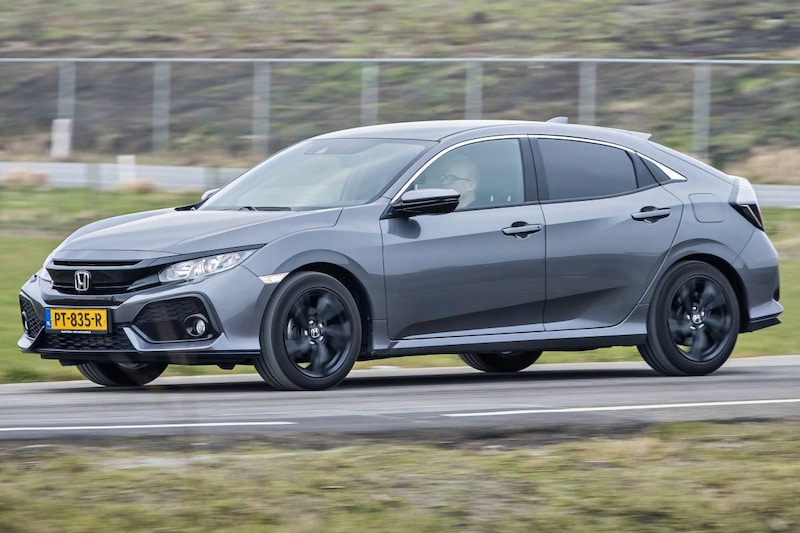
The Honda Civic is a great name. The Japanese have been marketing it successfully since the early 1970s and for a long time. For context: until 1998, the Dutch fleet grew by at least 5,000 Civics per year. Those times are long behind us, and the last significant sales peak dates back to 2009. You could even call the tenth generation Civic, which we discuss in this article, downright rare. We discover why based on user experiences.
Now we don’t expect a clear answer right away. The relatively pricey Civic does not seem to be a completely rational purchase, and then you just have to be able to embrace its striking appearance. The Civic therefore appeals primarily to the hearts of enthusiasts and it does so with verve. If there is anything striking about the user reviews, it is the proportion of die-hard Honda fans. Several riders refer to their previous Honda and a few even to the next one.
Then the technology, which, just like the appearance, is quite striking. Honda supplies the tenth Civic with, among other things, a 1.0-liter or 1.5-liter i-VTEC turbo engine, optionally linked to a CVT automatic transmission. Those who prefer a diesel get the 1.6 i-DTEC and for sports enthusiasts there is the blazing hot Type R. Yes, that is also discussed in this piece. Do you want to know everything about every generation of Civic? Then be sure to read our review.
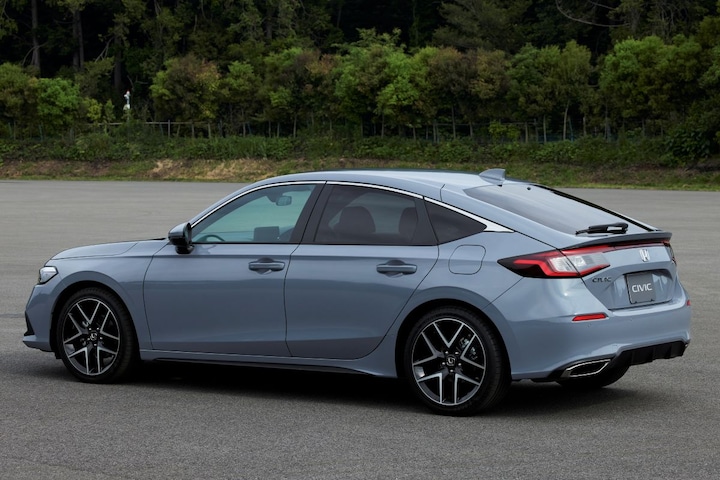
This is how the tenth Civic drives
Let’s start with the driving, which seems to be an important purchasing argument for many Civics. “Compared to previous Civics, the chassis is a lot more comfortable and provides more peace of mind,” writes a seasoned Civist about his 1.5 i-VTEC Sport Plus. “It filters everything out very nicely and eats up the imperfections.” This driver is also pleased with the handling. “It lies and feels good on the road; the chassis gives a lot of confidence when approaching corners. It now has multi-link at the rear, which means it no longer slides the rear end on quickly taken fly-overs when transitioning between road sections.”
A second 1.5 driver also makes the comparison. “The Civic steers like a Civic, tight, but still comfortable. It is extremely stable and can easily be steered through the bends. This generation has less stiff suspension than the previous, ninth generation, but that does not detract from the driving pleasure.” What is striking is that several drivers have access to an adaptive suspension, but prefer to leave it in Comfort mode. In Dynamic it seems a bit hard. “Then the damping is slightly firmer than in my Type R in the normal position!” writes a somewhat surprised owner. We could quote more drivers, but without exception they say the same thing. Honda has apparently found the balance between comfort and dynamics well.

It’s probably not surprising that the Civic Type R goes even further. This is reflected in the words used by owners. “The driving: well, that is really phenomenal and comfortable at the same time,” writes the owner of a white Civic Type R GT from 2018. “I have only one word for the handling: phenomenal. The previous one also had great handling, but an extra has been added. It must be due to the double wishbones at the rear,” says the driver of a similarly designed car. That will not be the explanation, because as another driver previously indicated, this generation of Civic has a multi-link rear axle.
Can we conclude that the Civic must be the perfect car? No, a small blemish on the record is the limited rest on board. Several drivers indicate that their Civic could be a bit quieter, with the sound of the tires in particular penetrating the interior.
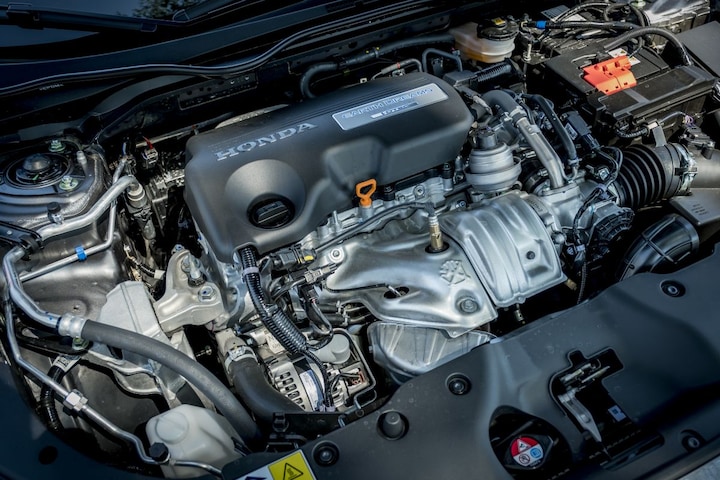
Engines and drivetrain
Owners write quite a bit about the drivetrains, so they deserve a separate chapter. “The heart of the Civic is equipped with a 182 hp 1.5 turbo engine that is linked to a CVT transmission. That turns out to be a golden combination!”, experiences an enthusiastic rider. “Pulling up is really a treat. You’ll be up to speed in no time without a screeching engine, which is what people still expect when they hear the word CVT. Honda has managed to refine this considerably and you notice that on all sides.” A gimmick: “You can switch a (virtual) gear up and down using the paddles on the steering wheel.” Another 1.5 driver also emphasizes that the transmission behaves well. “This CVT is not as screechy as the CVTs I drove in the 2016 HR-Vs, or like my wife’s Logo.”
It is not just the powerful 1.5 that impresses, the 1.0 also appears to know its stuff. “So it is a 1.0-liter three-cylinder turbo engine with 129 hp and a CVT,” explains an owner. “Well, this car has such power and that engine sounds great when you step on the gas. You feel the CVT downshift and it’s gone. Overtaking or merging on the highway is a piece of cake.” And for those who still want to know: the Type R obviously goes one step further. “A jewel of a block, 320 hp and 400 Nm of torque between 2,500 and 4,000 rpm. This engine pulls incredibly hard when you accelerate. It goes very smoothly up to 4000 rpm and then all hell breaks loose. This block runs off like a greyhound,” shouts a happy owner from the rooftops.

But can you also do something with it?
It is clear that the tenth generation Honda Civic drives well, but is it still useful in daily practice? The answer to that appears to be a resounding ‘yes’. “You have plenty of space,” says the owner of a Civic 1.0 i-VTEC. “The trunk with the double layer is large, you sit comfortably in the back and also comfortably behind the wheel.” A diesel driver endorses these findings. “The space in the back is considerable. The legroom is more than fine for someone of 1.80 meters and the headroom is also neat. We have already been on holiday a few times and it was effortless with three people and it would also be fine with four. The trunk is spacious enough and easily accessible.”
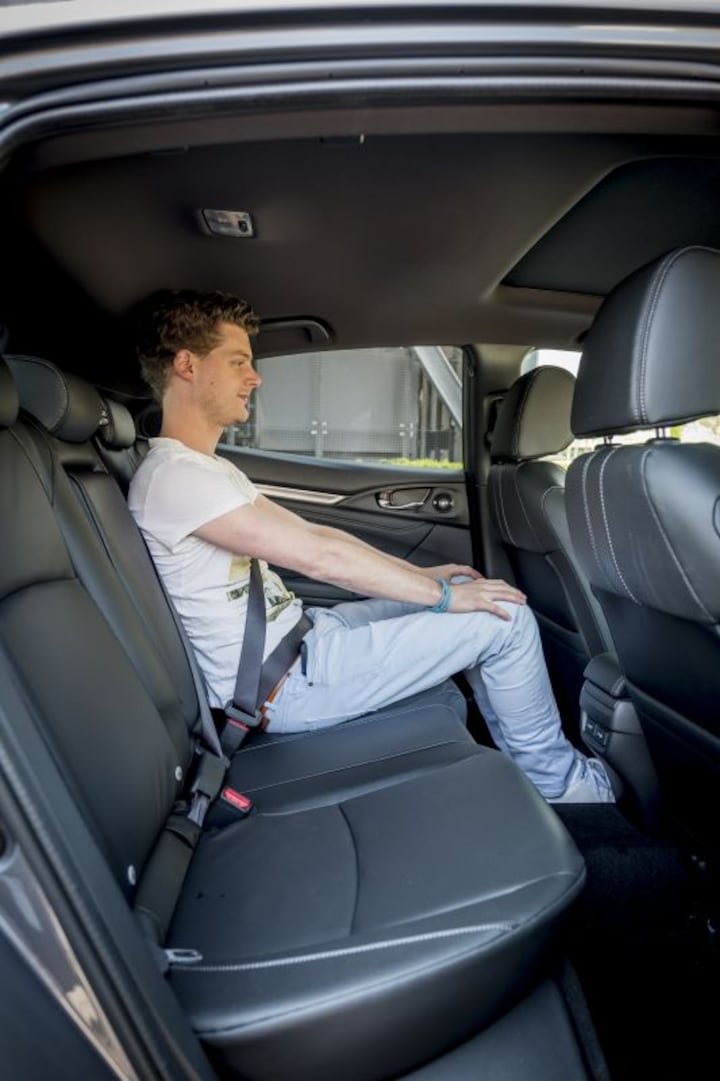
A third driver about his 1.0 i-VTEC: “The people in the back seat are doing well. The seats are comfortable and there is plenty of legroom. Headroom is also good, despite the electric skylight. I’m almost 6 feet tall and I don’t touch the ceiling when I’m in the backseat.” In fact, the same applies to the space available as to the driving characteristics: we could quote more experiences, but they are all equally positive.

Searching for the perfect seat
When we look at the furniture, the experiences are really mixed for the first time. Some riders also note that the seating position is not immediately good. “In the end, after six (!) months of trying and changing positions, I now sit a lot higher than before and in the second rearmost position,” writes the driver of a Civic 1.5 Sport Plus. “It is only now that I feel a bit at home in the chair, which leaves a lot to be desired in terms of lateral support. Quite strange for such a sports model that is not better equipped for this; better lateral support would have been very welcome.” He receives support from a second rider. “The seats fit well, even on long distances, but I do share the criticism that you slide slightly on the leather-covered seats in fast bends. The side cheeks could have been a little higher.”
A third 1.5 driver also did not sit well right away. “I had to look for the perfect seat behind the wheel, but it’s OK now. What really pleases me is the extremely low seating position in the car.” However, he himself made a small modification to make the seat even better. “There is one but and that is that the support in the back of the knees could be better, something that more Hondas suffer from. I solved it perfectly by screwing 3mm washers under the front rails. That was enough to give my longer legs sufficient support, even on longer rides.”

Maintenance, malfunctions and irritations
Looking through the reviews reveals one structural problem: parts of the air conditioning system appear to be vulnerable. It happens more than once that after solving an air conditioning problem, drivers have to return again for the replacement of a second part. After replacing the air conditioning condenser, a hose on this owner’s Civic 1.0 also turned out to be torn, leaving the air conditioning system as good as empty. The next driver has little confidence in it. “The problem is that this model has very poor air conditioning. The condenser was leaking when purchased and now the evaporator is leaking. After research, especially on American forums, it appears that both the condenser and the evaporator are very weak.” A 1.0 driver fared even worse. He suffered a reportedly rare engine failure, after which the car had to undergo major surgery. “I got a new lower block and a new turbo and a week later I got the car back.” Another positive note: “The reliability was perfect. In 100,000 km, only a windscreen hit by stone chips has broken and I have never made an unplanned visit to the distributor,” says a Belgian 1.5 driver.
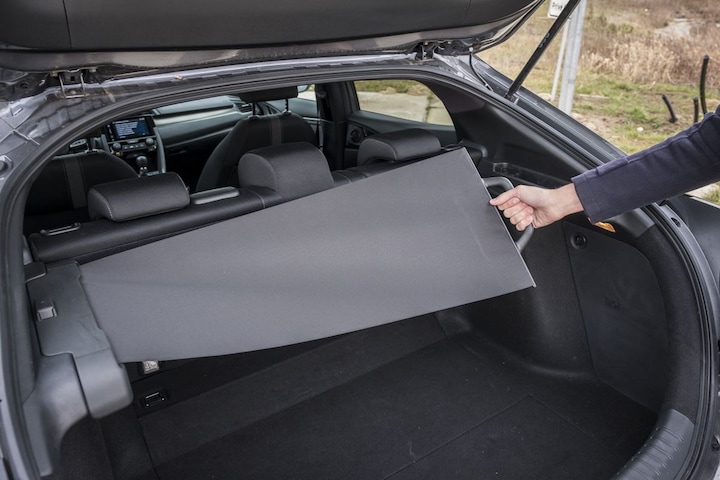
What remains is the image of the Honda Civic as a practically usable car with a particularly good chassis and appealing drivetrains. Owners are above average unanimous in their findings and it would not surprise us if they will also purchase an eleventh, twelfth and thirteenth generation Civic after the tenth. Let’s hope that Honda has improved the air conditioning system by then, because that seems to be the Achilles heel of this car. Apart from that, the question remains why we don’t see more Civics on the road, because rarely do we see more positive users in this section.
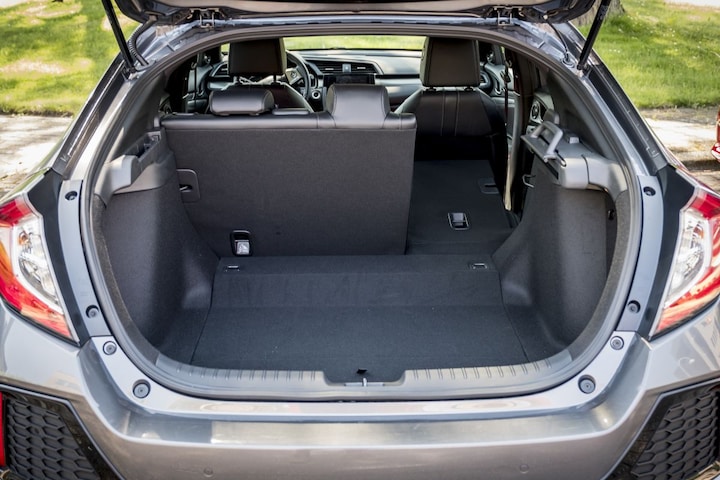
– Thanks for information from Autoweek.nl